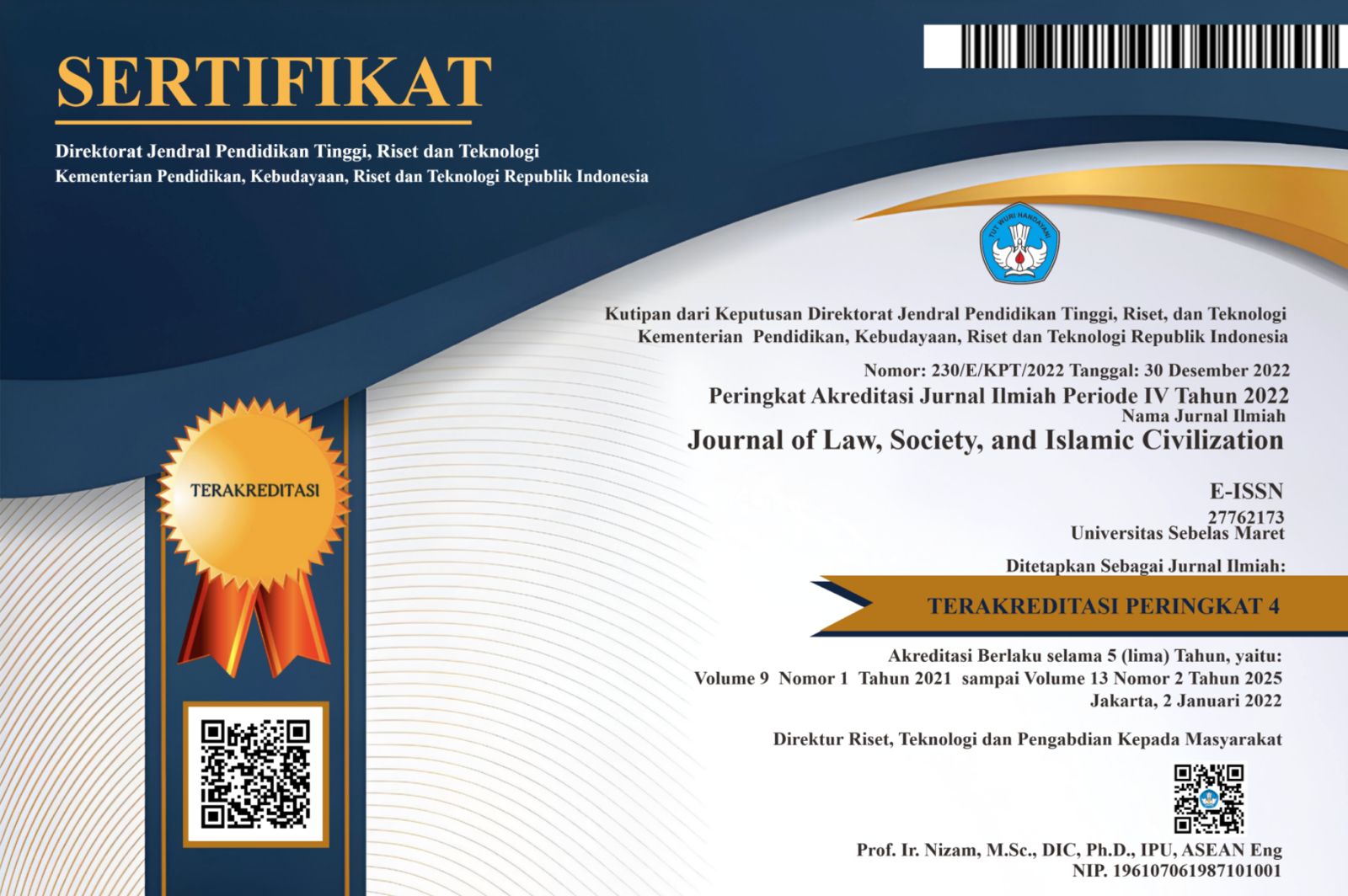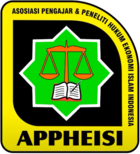Tinjauan Yuridis Terhadap Eksploitasi Anak (Studi Komparasi Eksploitasi Anak di Jalanan dan Konten Kreator)
Abstract
Keywords
Full Text:
PDFReferences
Al-Jauziyah, M. I. Q. (2021). Konsep Kewajiban Orang Tua Terhadap Pendidikan Anak. Skripsi, Fakultas Tarbiyah dan Ilmu Keguruan, Institut Agama Islam Negeri Jember.
Betawi, U., & Nasution, M. I. H. (2024). Reconceptualizing the Marriage Age Limit in Indonesia: Efforts to Strengthen Family Resilience in North Sumatra. Al-Manahij: Jurnal Kajian Hukum Islam, 18(1), 161–178.
Daerah, K. P. P. O. (2004). Kajian Perda Kabupaten Serang No. 13 Tahun 2003 Tentang Kewajiban Penyediaan Fasilitas Kesejahteraan Buruh/Pekerja. Review Regulasi, Komite Pemantauan Pelaksanaan Otonomi Daerah.
Erdianti, R. N., & Fatih, S. M. (2019). Mewujudkan Desa Layak Anak Sebagai Bentuk Perlindungan Hukum Terhadap Anak di Indonesia. Justitia Jurnal Hukum, 3(2), 305-318.
Hidayat, S., & Mahyani, A. (2017). Perlindungan hukum bagi anak korban eksploitasi sebagai artis. Mimbar Keadilan, 12(7), 133-145.
Ishak, M. (2013). Kemiskinan dan pengaruhnya terhadap kejahatan dalam perspektif teologis dan sosiologis. Jurnal Muamalah, 9(1), 122-136.
Jennah, R., & Hidayat, N. A. (2022). Pertanggungjawaban Pidana Bagi Orang Tua Pelaku Eksploitasi Anak Untuk Konten Media Sosial. YUSTISIA MERDEKA: Jurnal Ilmiah Hukum, 8(2), 22-28.
Kurniawan, D. (2009). Kemiskinan di Indonesia dan Solusinya. Gema Eksos, 5(1), 1–18.
Kurniawan, S. (2019). Hak-hak Anak yang dirampas Kajian Terhadap Kasus Perdagangan dan Eksploitasi Anak Dalam Sudut Pandang HAM dan Islam. RAHEEMA: Jurnal Studi Gender dan Anak, 4(2), 109–117.
Muhaimin, M. (2020). Metode Penelitian Hukum. Dalam S. Dr. Muhaimin. Metode Penelitian Hukum, Mataram-NTB: Mataram.
Multiwijaya, V. R. (2018). Perlindungan Dan Sanksi Pidana Bagi Pemberi Kerja Anak. Hukum Pidana Dan Pembangunan Hukum, 1(1), 1-6.
Nurmawati, N. L. P. D. W. M. (2019). Analisis Terhadap Pekerja Artis di Bawah Umur Sebagai Bentuk Eksploitasi Anak Berdasarkan Undang-Undang Pelindungan Anak. Jurnal Kertha Wicara Fakultas Hukum Universitas Udayana, 7(3), 1-15.
Piri, M. T. (2013). Perlindungan Hukum Terhadap Tindakan Eksploitasi Anak (Kajian Undang-Undang Nomor 23 Tahun 2002). Lex Administratum, 1(2), 25-41.
Prajnaparamita, K. (2018). Perlindungan Tenaga Kerja Anak. Administrative Law and Governance Journal, 1(2), 215–230.
Rahman, M. H. (2019). Metode Mendidik Akhlak Anak Dalam Perspektif Imam Al-Ghazali. Equalita: Jurnal Studi Gender Dan Anak, 1(2), 30–49.
Safriani, A. (2023). Reupload Video Dalam Platform Youtube Ditinjau Dari Teori Kepastian Hukum. Journal Equitable, 8(1), 80-94.
Santoso, A. (2021). Larangan Eksploitasi Anak Menurut Undang-Undang Perlindungan Anak Nomor 35 Tahun 2014. Tesis Diploma, Universitas Islam Kalimantan Muhammad Arsyad Al Banjar.
Siregar, F. A. (2022). Eksploitasi Anak Di Ruang Media; Sebuah Tinjuan Hukum. Al-Qadha: Jurnal Hukum Islam Dan Perundang-Undangan, 9(1), 215–230.
Tambajong, G. (2021). Tindak Pidana Melaksanakan Penempatan yang Tidak Memenuhi Persyaratan Pekerja Migran Indonesia Menurut Undang-Undang Nomor 18 Tahun 2017 Tentang Perlindungan Pekerja Migran Indonesia. Lex Administratum, 9(2), 80-90.
Wibowo, A. (2021). Peran Orang Tua Dalam Menanamkan Akhlakul Karimah pada Anak Usia Dini di Desa Simpang Asam Banjit Way Kanan Lampung. Tadzkirah: Jurnal Pendidikan Dasar, 3(1), 65–75.
Wulansari, E. T. (2024). Tinjauan Hukum Islam Terhadap Fenomena Mendapatkan Gift pada Live Streaming Aplikasi Tik Tok. Skripsi, Fakultas Syariah, IAIN Ponorogo.
Yuliani, D., Rinaldi, R., & Pramadia, H. F. (2022). Eksploitasi Anak Jalanan Di Kota Bandung Dan Kabupten Ciamis Jawa Barat. Jurnal Ilmiah Kebijakan Dan Pelayanan Pekerjaan Sosial (Biyan), 4(1), 45-56.
Refbacks
- There are currently no refbacks.












